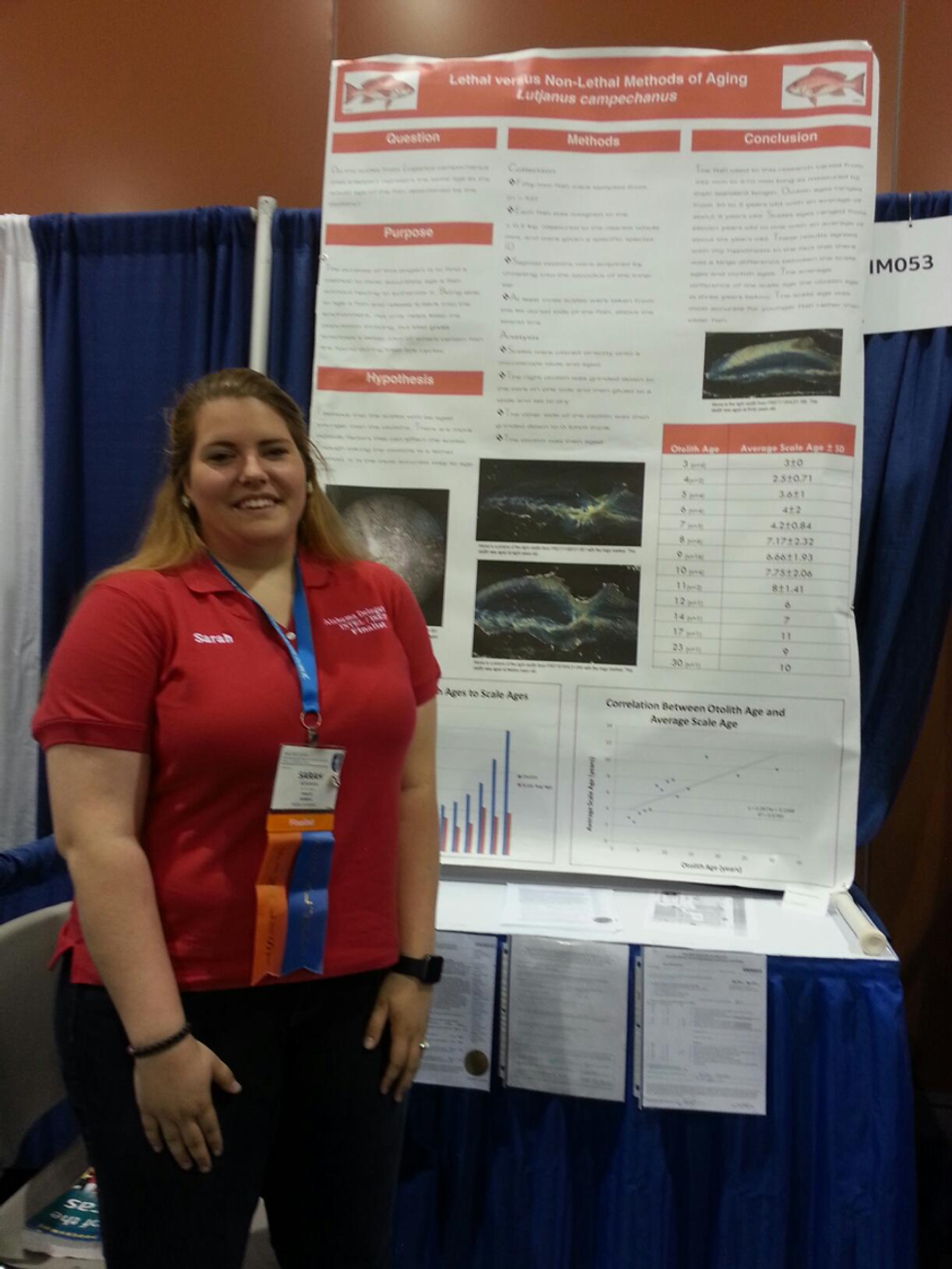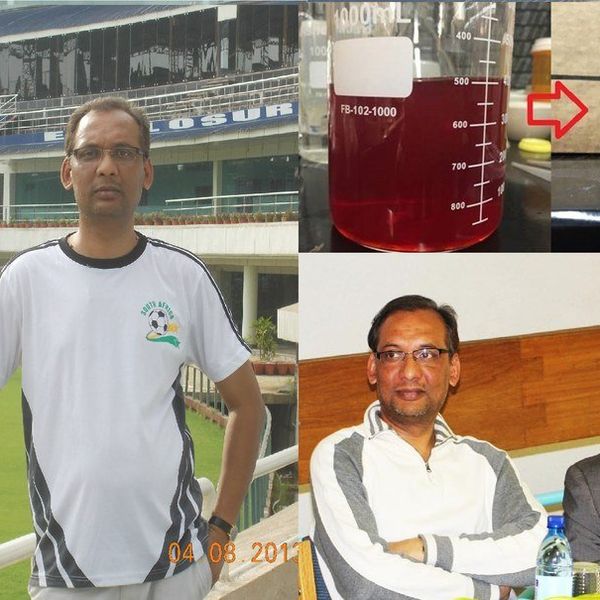This week I had the pleasure of talking to some of Alabama’s most brilliant scientists. Here is the kicker though—they are all in High School. Not only do these students have a passion for their work but May 8th through the 13th these students competed in Intel ISEF, International Science and Engineering Fair.
I spoke to six brilliant minds who have worked hard to already make a name for themselves in the science world. Hannah James, Danika Louw, Sarah Bowman, Connor Reed, Drew Prevost, and Jamie Lim have not only gone above and beyond in their field of study but, have set the bar of expectations for others their age.
Meet Hannah James:
When I asked Hannah about her project her response was not only surprising but emotional.
“I created and completed a research project that described how an extract of garlic could effect the activation of immune cells, wherein lowered activation is equivalent to lowered inflammation. I decided upon this specific research because I have juvenile idiopathic arthritis and I wanted to see if there were alternative, natural medications that could be used in lieu of the many drugs in use today with fewer side effects. The garlic extract did show a lowered activation of immune cells, and I want to continue this research in my college career.”
What makes Hannah so special is her drive to not only address the issue of juvenile idiopathic arthritis but to search for a cure as well.
Meet Sarah Bowman:
Sarah is just like any other college student, except she has a passion for marine life that has fueled a promising future at the University of South Alabama.
Sarah’s project involved the analysis of scales of red snappers compared to their otoliths. The extraction of the otoliths are lethal while the extraction of the scales are not. This project allows for a better method of aging the fish without euthanizing them.
When asked about her passions that fuel this project Sarah responded, “My sophomore year I emailed a professor at the university of south Alabama and asked for a mentor to work in his lab. That year at science fair I won the high school award for a scholarship to the course at the dauphin island sea lab. I have done everything from fishing to paddle boarding to long lining. The more marine experience the better.”
Meet Danika Louw:
Danika took her thinking outside of the box when she started thinking of potential materials that could alter building structure and costs.
“Hello! I'm Danika Louw and I'm a junior at Holy Spirit in Tuscaloosa. In my project, I tested the compression and tension forces (the different forces wood experiences under a load) on woods like pine, maple, and oak. From that data, I wanted to design a beam that is stronger than commercially used pine beams, but also cost effective and environmentally friendly. Along with the wood, I incorporated the composite material of fiberglass because it has a much higher tensile strength than any wood. With that added onto my beam, I was able to develop a hybrid composite beam that uses different woods that excel in different areas of load and also have a strong tensile base to add resilience, durability, and strength. These beams are 121% percent stronger than commercially used pine beam, provide a good cost comparison (56 Newton/ dollar) and put much less of a strain on the environment because less hardwoods are being used due to the fiberglass.”
What makes Danika so passionate about her work? “Well what connected me to my project was that after a tornado came through my hometown, there was so much devastating aftermath. I was looking at how the trees broke in different ways so pine would completely snap in half whereas oak would just splinter. This got me interested in the different properties of different materials and how these make up what it is.”
Meet Connor Reed:
Connor’s project is something that sounds (pun intended) as if it were straight out of a science fiction movie. It involves creating a standing acoustic wave at a high frequency in order to suspend, small, lightweight objects, such as Styrofoam. Along with his presenting his project Connor was experienced the Intel QUAD which is a collection of the latest technology such as drones, virtual reality, and more.
What makes Connor’s project so special is that after reading an article where two University of Tokyo professors successfully completed this feat he realized that this type of research had not been truly explored. This makes Connor one of the few scientists who truly focus in this field of study.
Meet Drew Prevost:
Drew’s project speaks for itself. It has not come together overnight however; his project is a four-year dedication that is evident in his research.
“My project was the culmination of a four-year project regarding the design of high power electronics, specifically for electric vehicles and other alternative energy power systems including solar panels and wind turbines”
This year Drew took his project to the next level by testing it in a fully functional motor vehicle.
“This year, the fourth year, used the basic technology developed in the previous phases of the project to design and build a power factor corrected pre-regulator, battery charger, motor controller, and battery management system. I then built and tested the systems in a full electric vehicle. I drove the vehicle for five miles while monitoring voltage transients, speed of the vehicle, and temperature of the components.”
Drew plans to attend the University of Alabama in Huntsville with a major in Electrical Engineering.
Meet Jamie Lim:
After a brief conversation and discovering our joint love of all things Disney, Jamie told me of her project and how she intends to lessen the effects of Leukemia and treat patients with a garlic extract.
“In my project, I wanted to see if a component in garlic called allicin would have an effect on leukemia cells. I found that allicin was able to limit the growth of leukemia cells and induce erythroid differentiation, which is the process of a blood stem cell becoming a functional red blood cell.”
So what does this mean for the future?
“I found that allicin was able to push leukemia cells to exit the abnormal stage and continue to become functional red blood cells. This finding is exciting because it suggests the potential benefit of allicin in treating leukemia.”
After speaking briefly with each of these students I found one final conclusion: limits do not exist when passion and opportunity are involved. Alabama has amazing talent sitting in our very own classrooms. These are the students who will one day shape how we treat sicknesses, see nature, build technology, and more.
“The true sign of intelligence is not knowledge but imagination.” – Albert Einstein





















